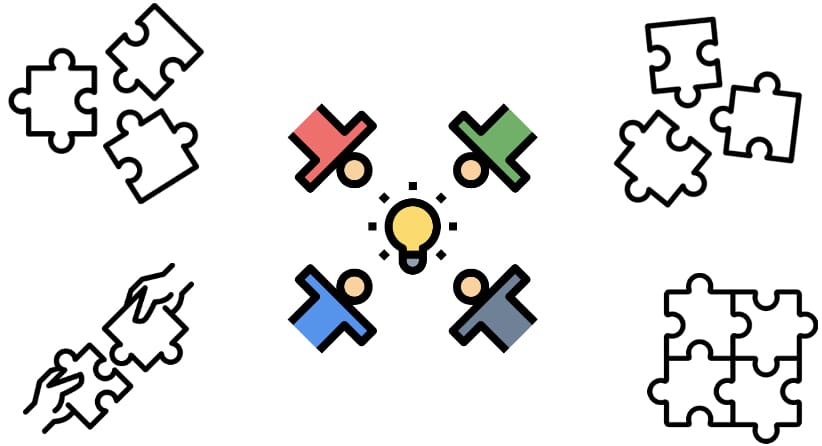Using Agile, in particular Scrum practices, in classrooms supports learning the skills of self-regulation as well as the social-emotional skills needed for establishing good team interactions. Better collaboration is fundamental for developing sustainable practices and addressing the many challenges we are facing globally today including the impacts of climate change on food security, housing availability and water resources. When project (or problem) based learning is combined with Agile practices we also have opportunities to incorporate critical thinking skills, and support and develop curiosity in our students. There are many examples of these instructional practices in education, which currently frequently fail to be used due to the demands on teachers regarding local and national testing expectations.
Incorporating an Agile mindset and practices into the educational setting can provide opportunities for students to be exposed to and learn many foundational skills needed for both academic and personal future success. In particular, teaching the practices and systems inherent in Scrum Project Management allows students to learn and practice skills in communication, task tracking, scheduling, and time management. These are the skills we need students to have in order to support creative sustainability solutions. We know that the best solutions need to have a diverse team, able to bring different perspectives and viewpoints. Sustainability solutions will require these kinds of interactions in order to address the challenges we face from climate change. Many students do not currently have these skills because the current educational system supports adult-led learning and activities, rather than student-led learning which requires using the very skills creative problem-solving requires.
In an Agile classroom students are exposed to systems that guide interactions, provide support for managing and tracking assignments, and are held accountable for managing responsibilities inherent in a learning environment. This approach also lends itself well to incorporating problem or project-based learning experiences, in particular, focused on sustainability challenges, creating a classroom where students are actively engaged in learning and practicing the future-ready skills they need.
What does this look like?
Well, it begins with approaching the learning expectations provided in State frameworks (and these exist for every country in some form) as a project. In the United States, the science standards that focus on climate change exist at every grade level from Kindergarten through High School. Teachers can first focus on the questions being asked within the learning standards. They then determine which resources they can curate for their students to use to answer these questions. Next, consider learning a skill or gaining an understanding of a concept. Also, what does it bring in terms of awareness of current events? which require the application of these skills and concepts for solutions.
By having students focus on answering these questions, we enable students to practice the skills of Scrum, supporting an Agile mindset by allowing for pivots in response to information and learning as they occur. Teachers prepare students for their content learning by having the focus of the project become answering the questions posed for the unit of study. The curated materials become the tasks students select from, to answer those questions and learn the skills stated.
This approach incorporates the pedagogical practices of Universal Design for Learning (UDL) which asks “What are the barriers students face in learning” and then seeks to provide options and scaffolding to overcome those barriers for all students to benefit from.
When blending the UDL approach and the Scrum methods for structuring secondary school (high school) class interactions some students blossomed, as their understanding and engagement with content deepened. The basis of intrinsic motivation is having control or choice in some aspects of what you are doing. Using Scrum’s framework for example allows the integration of lifelong durable skills into the systems of daily classroom activities, while still meeting (and often exceeding) the content requirements of the course by allowing students to schedule, track, and manage their learning with greater independence. Scrum allows the teacher to step back, without losing accountability and tracking of learning goals by the students.
Wrap-up/Closure
Critical thinking skills are needed in order to craft solutions to the challenges of sustainability. We also need to support curiosity. The constraints of curriculum coverage and standardized testing make it difficult to support these two needed skills/qualities (it’s hard to go outside the box regarding topics and wander down “rabbit holes” of interest). Educators are often blocked from innovation when there is a lack of understanding of the need for changes in education. Today’s classrooms should not look like the classrooms we (the adults) learned in, they need to evolve. Just think about the way we access and consume information nowadays.
The Agile approach would also benefit educational administration. Too often administrators micromanage and push through change leadership demands and forget to include and bring their teachers along with them. Administrators go through the motions and create committees to discuss, create, and support a number of initiatives, but these committees too often fall by the wayside due to mismanagement and a lack of strong tracking systems – such as Scrum boards and kanban boards. Education would benefit from an Agile approach because like so many industries, it requires the flexibility to rapidly pivot and adjust to accommodate new technologies, new mindsets, and changing conditions. Sustainability initiatives in schools would certainly benefit from more flexible systems of problem-solving.
Solutions for a sustainable future require many skills: communication, team collaboration and cooperation, and creative problem-solving. There are a number of initiatives that are currently working on bringing aspects of Agile into education. In some cases, they are focused specifically on using Scrum or Kanban boards to organize project-based learning experiences. In others, they are using these project management practices to provide students with the experience of the topics they are studying rather than merely the theory of them.



